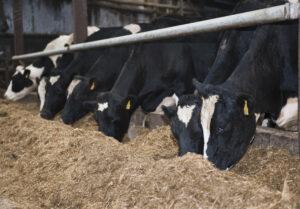Get a 24 hour weather forecast

Key Takeaways
As the summer progresses, the importance of securing sufficient fodder for the upcoming winter cannot be overstated. Based on the recent Teagasc June Fodder Survey published on July 8th , farmers are being advised to prepare for a third cut of silage. This proactive measure is crucial to ensure that fodder stocks are adequate to sustain livestock management through the winter months.
Complete a Fodder Budget:
A fodder budget will help you identify any shortfall early, giving you time to react and rectify the situation. The Teagasc Survey “data indicates an emerging winter feed deficit that necessitates immediate action on affected farms,“. “Farmers need to plan for third cuts and secure additional feed based on their own fodder budgets”
Joe Patton, Head of Dairy Knowledge Transfer at Teagasc, presented the results of the Fodder Survey, which included valid responses from 498 farms across the country. The survey revealed that fodder stocks after the first cut stand at 60% of requirements for dairy farms and 64% for drystock farms, against target levels of 70% and 77%, respectively for this stage of the year. Approximately 25-30% of farms in both sectors report significant deficits exceeding 10%.
Grass growth has reduced by approximately 10% so far in 2024 due to suboptimal weather conditions. However, this situation has improved in recent weeks.
Slurry and chemical nitrogen applications are getting back up to date having been behind normal levels earlier in the year. However, there is a need to optimise fertiliser use, including nitrogen (N), phosphorus (P), potassium (K), sulphur (S), lime and organic fertilisers, for the remainder of the year to ensure grass production. Farmers are urged to contact their Teagasc/ACA advisor to assess how much fertiliser they can spread over the rest of the season. This will ensure that they have correctly assessed fertiliser N and P allowances to facilitate appropriate fertiliser applications. Now is the time to take advantage of grass growth opportunities when you get the most value from fertiliser applications.
It is wise to build grass covers & fodder stocks now with appropriate feed and fertiliser supplementation than letting it go too late.
Contact you Dairygold ASM for advice on fodder stocks and diet formulation options to keep all animals fed optimally this winter.